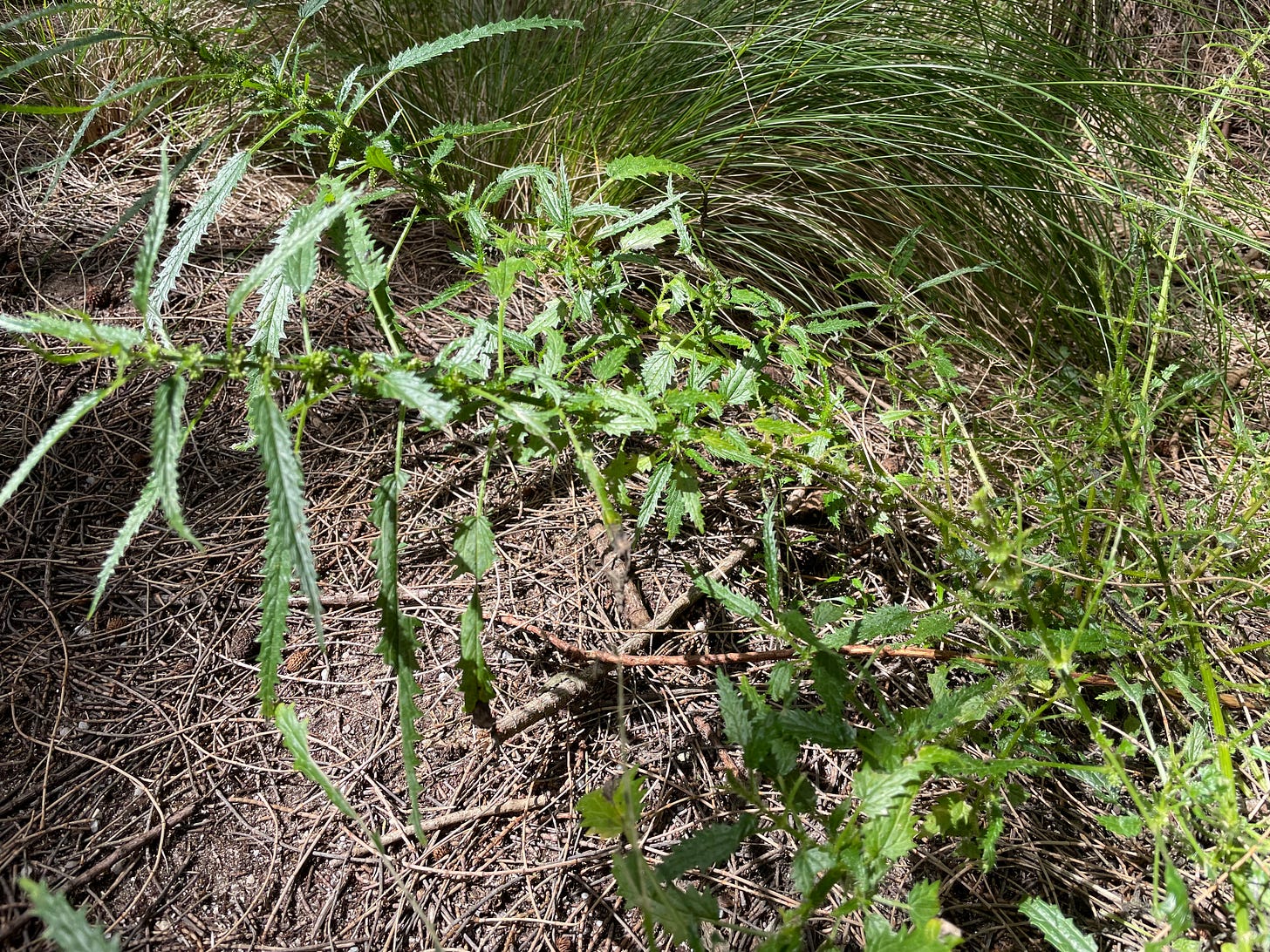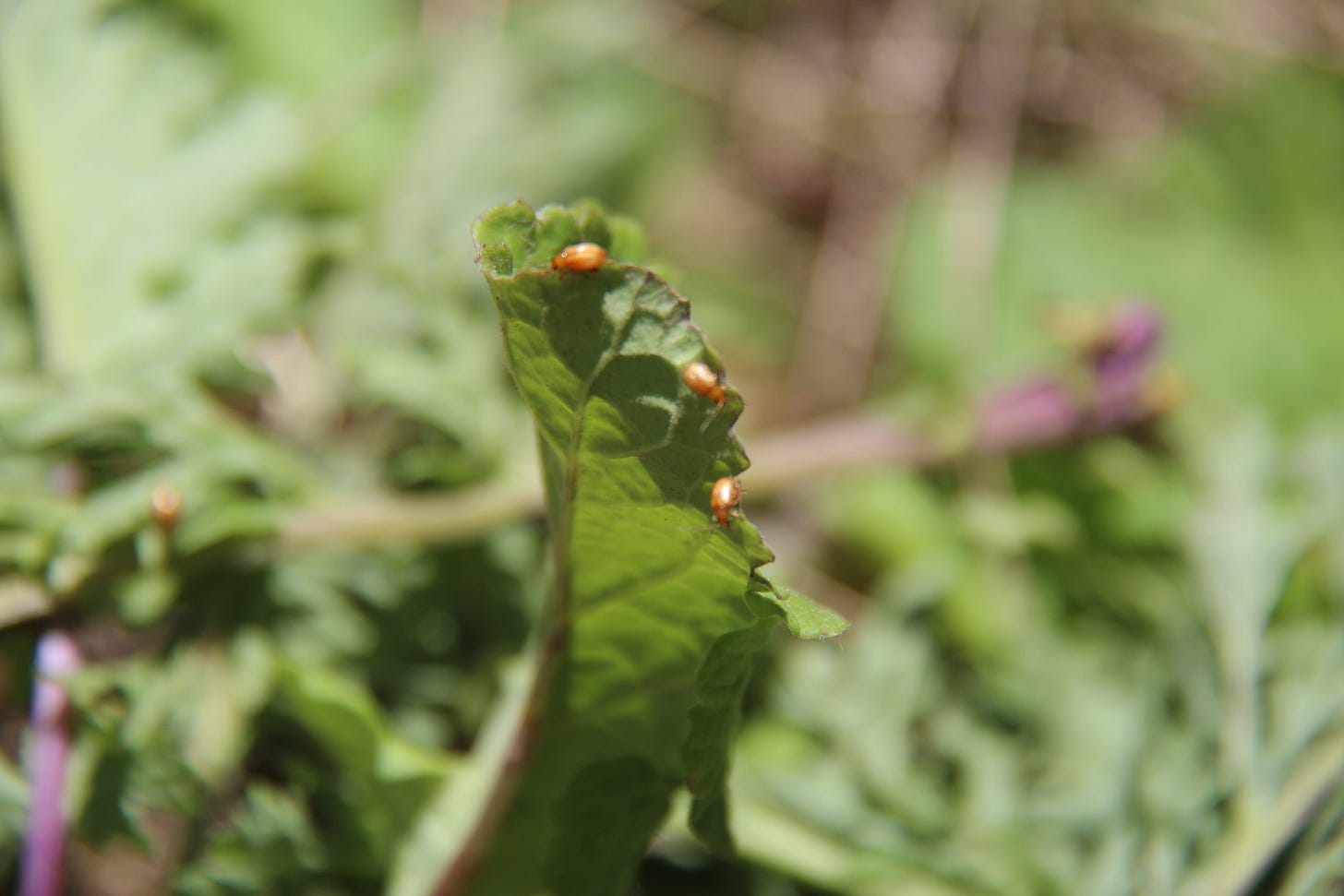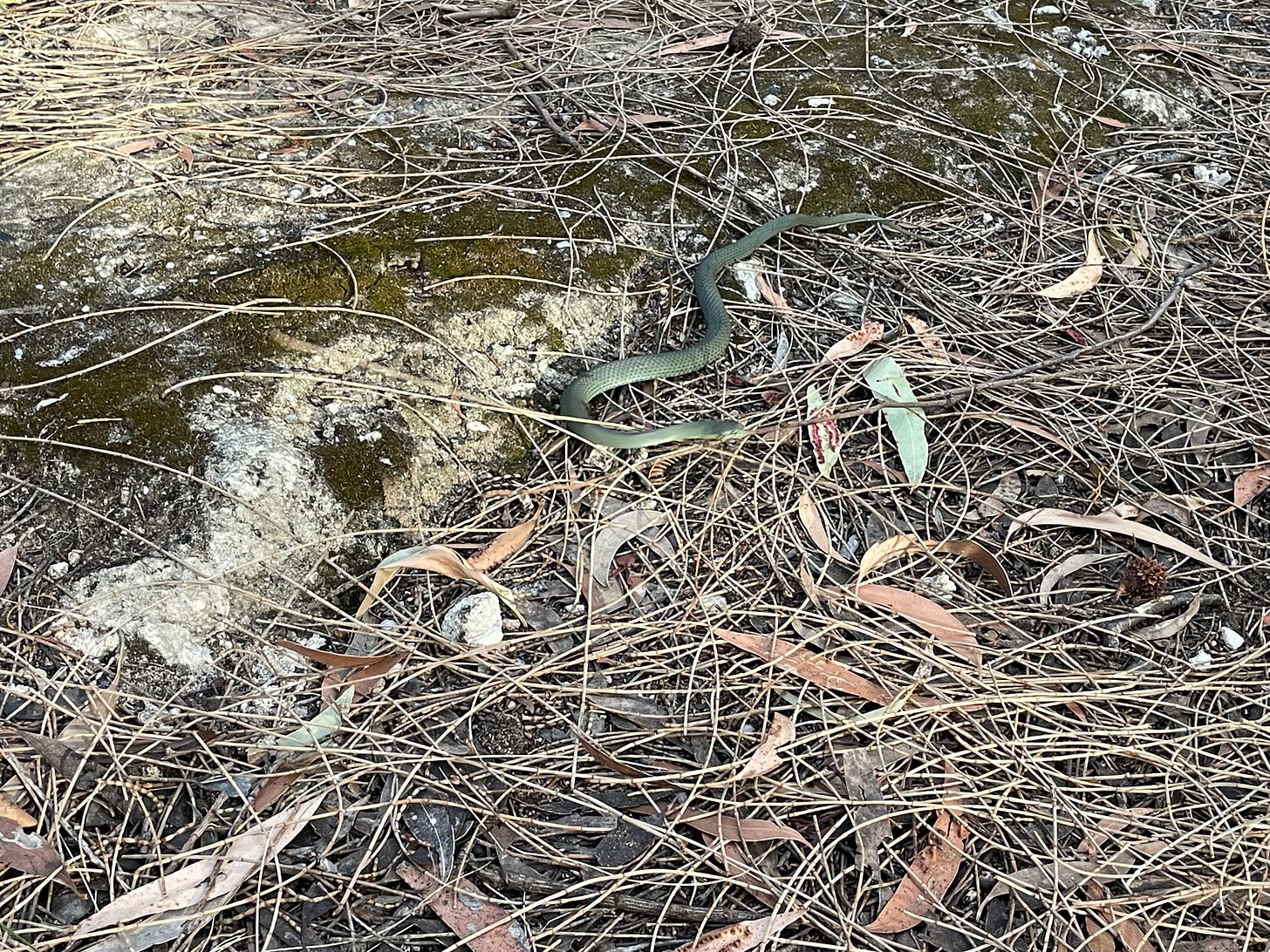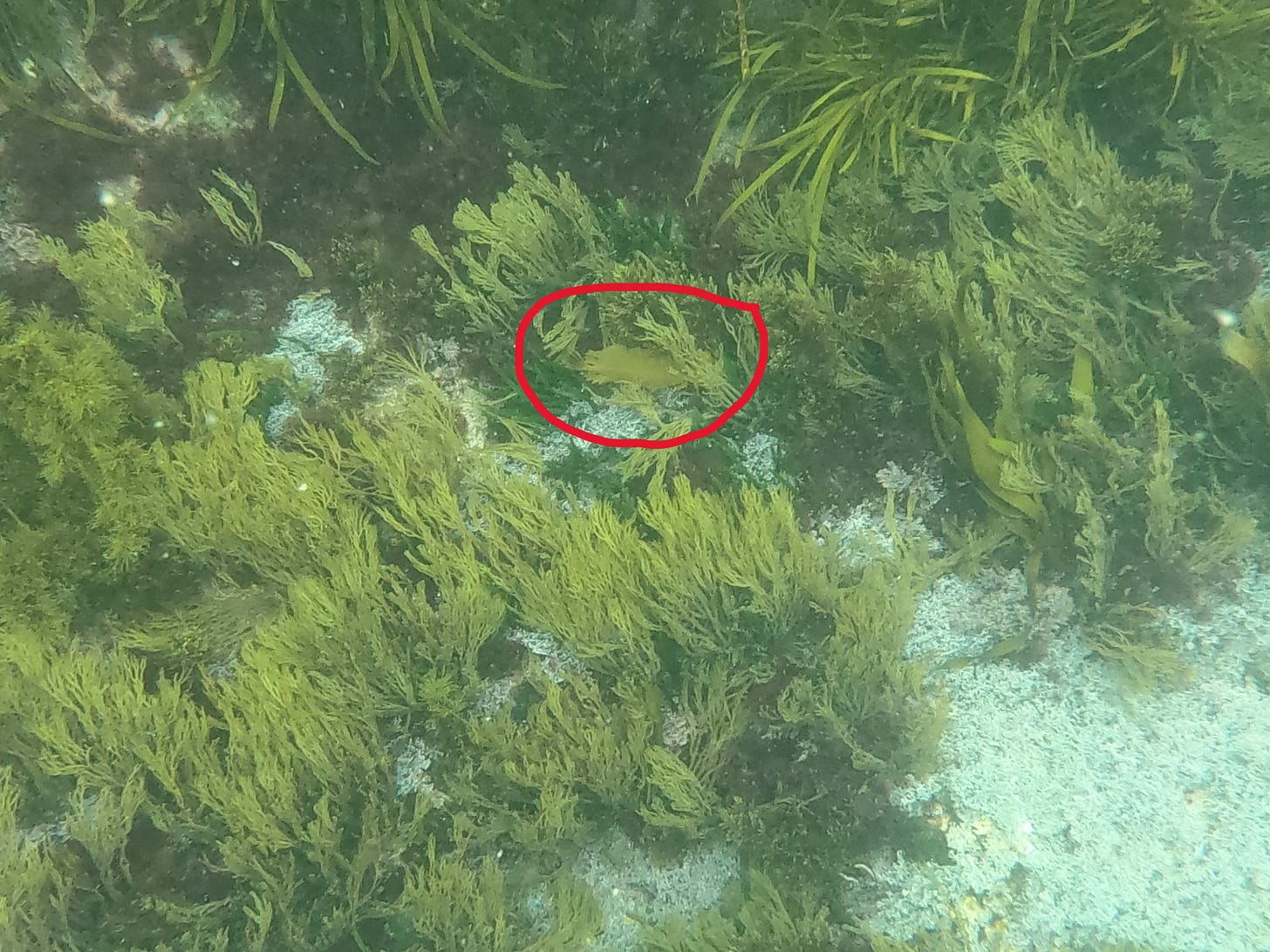Apanie and I have been taking delight in the natural wonders here. We’ve enjoyed mornings spent drinking coffee while identifying birds in the backyard, attempting to identify (and remember) various plants, and hypothesizing about geese and wallaby behaviour (and brain size). One of my favourite things about being here on Deal Island is just how immersed in nature I feel.
The Atlas of Living Australia records close to 1,500 species here – but we’re sure it’s not complete. Here’s a little ramble about just a handful of them.
Flora
The dominant vegetation communities here are tussock grassland and casuarina forest. There are two species of casuarina. For the first two months we refused to look it up, and instead tried to intuit the difference. We weren’t getting very far until a walk to the peak beyond the lighthouse uncovered a number of very stout sheoaks with much smoother cones (Allocasuarina monilifera). Bingo! Until then, all our pondering had been around different morphs of the same species (Allocasuarina verticillata) – no wonder we were having trouble differentiating them. We have (obviously) now confirmed our findings against the reference book.
Another species of note, that we learnt to identify very early on in our stay, is the native nettle. It’s abundant along a section of track down to Pegleg, and small seedlings of it pop up in the vegetable garden occasionally. It certainly hurts to brush up against one (the little seedlings we’re brave to remove by hand). Not quite as extreme as the following account from 1810 would have you believe:
… the most dangerous and offensive plant we met with was a new Species of Urtica, which grows to the height of five or Six feet; the Sting of this Noxious weed produces the most painful inflammation and Swelling, which terminates in a Torpor and Numbness of the whole limbs. When the feet and Hands were but Slightly touched with it, the Unguinal and Axillary Glands in a few Minutes become painful and Tumefied; if the parts are much affected it induces Spasms and Lethargic Stupor to the whole System. Several of our dogs, that were exposed to its effects whilst hunting Kangaroo, died in a few Hours after in the Greatest Agony; they first expressed the Torture they suffered by howling in the most dismal manner; a remarkable swelling of the whole Body and numbness of the extremities followed, accompanied with frothing at the Mouth, Wildness of the Eyes, and every Symptom of Madness, but hindered from doing Mischief by their excessive Weakness; Two or Three Hours generally terminated their suffering.’1
The tussock grasslands are truly beautiful – my favourite being the valley down to Little Squally Cove. They’re all sorts of golds and yellows in the different light. An unfortunately abundant species among them is ragwort, which has punctuated the hills with yellow flowers over the past two months. It’s an invasive species and there have been considerable efforts to get it under control. Apparently, it hasn’t made its way to Flinders Island yet, so there’s an impetus to prevent it spreading any further. Apanie and I have spent many hours removing the seeding flower heads and pulling the weeds. The density of the tussock adds to the challenge – but it does provide a cushioned surface to fall into when a very stubborn ragwort finally releases from the soil.
We recently hosted Jo & Stu from the Friends of Deal Island (FODI) Wildcare volunteer group to release some ragwort beetles as a bio-control. They had collected them from Bruny Island, where apparently, it’s been quite successful, and released around 400 of the little buggers at a test patch over near Winter Cove. Fingers crossed it works. They were excellent folk and we had a great time with them over four days exploring all reaches of the island for weeds.
Despite historical accounts of the island mentioning mangroves 150 years ago, there are none here. I’m certain this early reference was a misidentification (what would a Reverand know about plants, I wonder?). Apanie’s partner Jock, however, is a mangrove specialist, and asked us to keep our eye out, and to our surprise, a couple of propagules turned up at East Cove the same day he arrived to visit! We have since played several rounds of ‘propagule or poo’ at each of the beaches around the island to gather data for him and his colleagues’ interests. It’s amazing how similar a wallaby poo and a well-travelled mangrove propagule look – same size, same shape, same colour and both lightly coated in sand.
There’s a wonderful herbarium here that was created by previous caretakers (Penny and Bob Tyson) in 2004. They’ve done an impressive job, and I’m thankful for their efforts.
Fauna
‘Just one species’ is a bit of theme here on the animal front. There’s just one species of wallaby, one species of snake, one species of goose….
The wallabies are Bennett’s Wallaby, and incredibly tame owing to there being no predators here. You can walk within half a metre of them without perturbing them. Our stint on the island nicely coincides with an abundance of joeys. They’re adorable. The population must fluctuate based on food and water availability. There are a handful of semi-permanent water sources around – all spring fed. I found a queue of wallabies lining up head to tail waiting to tip their heads in to the East Cove spring just the other day. We often see them hopping along the beach, and oddly, Apanie saw one wade into the water to about pouch height. I suppose they’re just embracing life here in much the same way we are.
The snake is the white lipped snake – a little thing that only gets to about 30 cm long. We regularly see them in the tussocks while we’re weeding, but they move on quickly. They are venomous (related to the brown snake), but since they’re so teeny tiny and the venom gland is so small they’re unlikely to cause any harm. Larry, one of the snakes, took up residence in our front yard for a week there. Not sure where he’s gone now… into the wall of the house at one point.
Records in the caretaker office indicate a dozen rabbits were released on the island in 1842, however the population wasn’t as overwhelming as adjacent islands (Erith and Dover) because cats on Deal Island kept them under control. Reports of the late 1990s and early 2000s indicate rabbits were still abundant, but the population declined in the summer of 2002-3 and no sightings have been made since. The rapid decline was associated with an unusually large migration of bush/house flies over the summer, bringing myxomatosis and calicivirus. So that’s one reason to be thankful for the flies.
Our bird sighting list isn’t growing as rapidly these days, but it’s still going strong – just yesterday we spotted a new bird (the black shouldered kite). Highlights have been the ‘beautiful firetail’ and brown quail (they’re constantly giving us a shock when they flush out of the grassland). Despite not being native, the European goldfinch has been a fun one to see regularly. For the rare twitcher who might be reading this, our list currently stands as:
Brown quail
Cape barron goose
White bellied sea eagle
Little corella
White faced heron
Little black cormorant
Silver gull
Pacific gull
Welcome swallow
Flame robin
Beautiful firetail
Crescent honeyeater
European goldfinch
Tasmanian scrubwren
Forest raven
Masked lapwing
Little (fairy) penguin
Blackbirds
Brown falcon
Caspian tern
White naped honeyeater
Black faced cormorant
Golden whistler
Bassian thrush
Silvereye
Black shouldered kite
Cuckoo shrike
Pacific black duck
White throated needle tail
Marine life
In early 2004 the Tasmanian government established a marine reserve around the island. The waters have the highest diversity of fish species in Tasmania, owing to it being the confluence of three major currents – the warm Eastern Australia current from the north, the warm South Australian current from the west and the cooler waters of Tasmania from the south.
We snorkel or swim almost every day here and there’s always something new to see. The fish diversity is phenomenal. A highlight for me was the floating kelp the winked at me (the yellow crested weedfish). Oh, and the orca that swam through the pass one evening.
Dolphins are a regular and have come within touching distance twice. We also commonly see a big eagle ray and various smooth rays. We did get a bit of a fright during a very surgy day at Pegleg when a big Port Jackson shark cruised by us. Not as much of a fright as the time that a little wrasse bit Apanie’s hand though – it drew blood and she had teeth marks for days. We ate one if it’s friends as retribution.
You can catch up on my previous posts here:
Extract from Oxley, J. 1810: Islands adjacent to Port Dalrymple, Bass’s Straits. In Historical Records of Australia, Series 3, 1, pp. 771 – 777.









